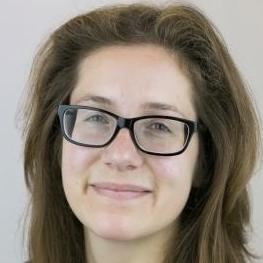If you’re an international student looking for a top undergraduate, master’s or PhD program in Scandinavia, the University of Copenhagen and Lund University are likely to be two of the names at the top of your list.
Not only are they two of Northern Europe's most historic universities, they are also at the top of the tree academically. The University of Copenhagen is Scandinavia’s top-ranked, while Lund University is the region's second.
Choosing between the University of Copenhagen and Lund University
Not too long ago, Sweden and Denmark were two of the only countries in which international students from anywhere in the world could take a full undergraduate degree completely for free.
If that sounds a little good to be true, well, that’s because it is. In the past few years, tuition fees have been introduced in both countries, meaning for students based outside of the EU they are now in roughly the same price range as destinations such as the UK or US.
It’s not all bad news though – that is, if you’re a student from a country in the EU. In that case, your degree will still be completely free, and in some cases you will be able to study it in English.
Lund University offers five full undergraduate degree programs taught entirely in English, and both universities have a wide range of options for English-language study at graduate level. There are also numerous English-language options for international exchange students.
Both universities are highly international, have excellent facilities and are based in historic cities in areas of stunning natural beauty. Having to choose between them is a nice problem to have.
To help, here’s a look at how University of Copenhagen and Lund University compare on key indicators, with an at-a-glance overview followed by a more detailed comparison...
|
|
University of Copenhagen |
Lund University |
|
|
|
|
Subject strengths* |
|
|
|
Location |
|
|
|
Student community |
|
|
|
Tuition fees |
|
|
|
Programs taught in English |
|
|
|
What the students say… |
Morgwyn Ward, international exchange student from Brisbane, Australia: “One really great thing about being an international student at University of Copenhagen is that, although the students really take their studies seriously, they also make time for lots of socializing. There are so many great activities going on all the time and heaps of opportunities to meet lots of new people which is perfect for international students.” |
Rachelle Lacharité, international student from Calgary, Canada: “Lund is the perfect balance of a high-quality education, proximity to an international airport and European capital, spirited student activities, just everything I was looking for. It has a small, cozy town feel, as well as hugely important historical and international connections.” |
*Based on the broad subject areas in the QS World University Rankings by Subject 2017.
QS World University Rankings® 2018
The University of Copenhagen and Lund University are Scandinavia’s two leading institutions, and among the most highly regarded universities in Europe. Featuring close together in the rankings, Copenhagen comes out ahead overall, ranking joint 73rd, five places ahead of Lund in joint 78th.
The two are evenly matched in many respects, although Lund has the advantage for both employer reputation and research impact. Employers rank Lund as the 123rd best university in the world for the quality of its graduates, ahead of Copenhagen in 205th.
What swings things in Copenhagen’s favor, however, is its outstanding student/faculty ratio. Only 20 institutions in the world boast greater teaching resources per student admitted, meaning the University of Copenhagen is well placed to offer a considerable level of personal attention and small class sizes.
However, in terms of on-campus international diversity, Lund is stronger – gaining higher scores than Copenhagen for both its percentage of international faculty members and international students – gaining a much stronger lead on the latter (171st to Copenhagen’s 401+).
Subject strengths
The University of Copenhagen and Lund University both achieve positions in the global top 150 for each of the five broad subject areas in the QS World University Rankings by Subject 2017, with Copenhagen achieving positions in the worldwide top 50 for two subject areas: life sciences & medicine (27th) and natural sciences (joint 48th). Lund also receives its highest score for life sciences & medicine (joint 88th).
A more detailed view of how Copenhagen and Lund each rank for individual subjects can be found below.
|
Copenhagen and Lund in the QS World University Rankings by Subject 2017 |
||
|
|
University of Copenhagen |
Lund University |
|
Accounting & finance |
-- |
101-150 |
|
Agriculture & forestry |
18th |
-- |
|
Anatomy & physiology |
16th |
51-100 |
|
Anthropology |
16th |
51-100 |
|
Archaeology |
30th |
51-100 |
|
Architecture |
101-150 |
51-100 |
|
Biological sciences |
37th |
51-100 |
|
Business & management |
-- |
51-100 |
|
Chemistry |
51-100 |
51-100 |
|
Communication & media studies |
-- |
101-150 |
|
Computer science & information systems |
101-150 |
151-200 |
|
Dentistry |
20th |
-- |
|
Development studies |
14th |
=32nd |
|
Earth & marine sciences |
=43rd |
51-100 |
|
Economics |
51-100 |
101-150 |
|
Education & training |
101-150 |
-- |
|
Engineering (civil) |
-- |
51-100 |
|
Engineering (electrical) |
-- |
51-100 |
|
Engineering (mechanical) |
-- |
51-100 |
|
Engineering (mineral & mining) |
32nd |
-- |
|
English language & literature |
101-150 |
101-150 |
|
Environmental sciences |
51-100 |
=38th |
|
Geography |
-- |
26th |
|
History |
51-100 |
101-150 |
|
Law |
-- |
101-150 |
|
Linguistics |
101-150 |
51-100 |
|
Mathematics |
101-150 |
101-150 |
|
Medicine |
37th |
51-100 |
|
Modern languages |
51-100 |
101-150 |
|
Nursing |
-- |
49th |
|
Pharmacy |
30th |
-- |
|
Philosophy |
29th |
-- |
|
Physics & astronomy |
51-100 |
101-150 |
|
Politics |
25th |
51-100 |
|
Psychology |
101-150 |
151-200 |
|
Sociology |
42nd |
51-100 |
|
Sports-related subjects |
18th |
-- |
|
Statistics |
51-100 |
101-150 |
|
Theology, divinity & religious studies |
38th |
51-100 |
|
Veterinary science |
13th |
-- |
Location
Though the two universities are in different countries separated by a stretch of sea, they are actually only around 60 kilometres apart.
For students looking to base themselves in a big, bustling capital city, the University of Copenhagen has the upper hand. Copenhagen offers all of the cultural riches you might expect from a major European capital with a population of around two million, all set against a stunning backdrop of canals and picturesque promenades.
“I love the food, the people, the history and how beautiful the country is,” says Morgwyn Ward, an Australian exchange student currently at the University of Copenhagen. “In Copenhagen, you really feel that the world and cultural experiences are so accessible.”
While Lund may be a city of more modest dimensions, for Rachelle Lacharité, a Canadian who studied for a bachelor’s degree at Lund University, it represents the best of both worlds.
“I love life in Sweden. I come from a city of over one million people back in Canada and was a bit afraid at first to go to a city of only about 80,000 inhabitants, but it has been perfect for me. You have a quaint, idyllic, reasonably priced student city, that is only a few kilometers from many other lovely cities, and actually, in Canadian terms, Stockholm and Berlin are also very close (only four hours by train).”
Student communities
Both universities have large and diverse student communities, with Lund’s total of 42,000 enrolled students slightly larger than the Copenhagen figure of around 38,615. In a city whose total population stands at just 114,000, that means Lund is perfect for those who want to retreat into a student bubble.
Rachelle describes Lund University’s commitment to its international students as “impressive”. “They have an international desk that offers all support you could ever need in all aspects of your studies, housing and social life, and they have even started to offer brilliant graduation ceremonies for some programs in the main university building (something that is not a Swedish tradition but is highly appreciated by international students).”
“One really great thing about being an international student at Copenhagen University is that, although the students really take their studies seriously, they also make time for lots of socialising,” says Morgwyn. “There are so many great activities going on all the time and heaps of opportunities to meet lots of new people which is perfect for international students.”
Tuition fees and funding
While EU, EEA and Swiss students (and those studying exchange programs) are exempt from paying tuition fees at the University of Copenhagen and Lund University, all non-EU students need to pay tuition fees. These will vary depending on your study level and subject, but generally range from €9,000-15,000 (~US$10,000-16,700) per year at Copenhagen and US$13,000-20,000 per year at Lund.
To help fund your studies, there are a number of scholarship schemes available. For example, the Swedish Institute Study Scholarships (SISS) are awarded to selected students planning to study a master’s degree, starting in the autumn of each application round. There were 335 of these scholarships awarded for the 2017 round, and they cover both tuition fees and living costs. Priority is given to students choosing programs with an emphasis on gender equality, sustainable development, democracy, human rights or poverty reduction.
At Lund University, the available scholarships include the Lund University Global Scholarship, which is a selective, merit-based grant awarded to bachelor’s and master’s students outside the EU/EEA. It awards up to 100% of your tuition fee amount and gave over SEK 17 million (~US$1.9 million) in grants in 2016. More scholarships offered by Lund University can be found here.
In Denmark, there are government scholarships available to students from China, Japan, Israel, Egypt, Russia and South Korea – these are only available to master’s and PhD level students and include free tuition and a monthly stipend. At the University of Copenhagen itself, some faculties offer scholarships for non-EU students. For example, the Faculty of Science offers a limited number of scholarships to outstanding non-EU/EEA masters students, which all students with a GPA of 80% or above in their bachelor’s degree are considered for.
What the students say…
Morgwyn: “Do it! Apply now. Studying at the University of Copenhagen has been such an amazing experience. My entire perspective has changed and I have learnt so much since being here.”
Rachelle: “My advice would be: do not hesitate. Lund University has been around for almost 350 years, so they obviously must be doing something right. I've seen this for myself now during my bachelor’s degree, and can say I am so incredibly pleased with my education, the country of Sweden, the student life and the beautiful city of Lund.”
Are you considering studying in Scandinavia?
Connect with other students in our international student forum >
This article was originally published in July 2013. It was updated in June 2017.













